Housing is the Balsa-style area where there has been the most progress lately. There seems to be growing consensus that it is vital we build more housing in places that people want to live. California is making serious attempts to force localities to do exactly that, here in New York we are making at least some progress, and across the country the YIMBY movement is making progress.
The bulk of this post is a roundup of the housing (and related transit) stories about such struggles over the past month. Going forward, it seems far more helpful to have this story and its links and other resources stored and told in large chunks, and to give those not interested a way to skip it.
This post is not intended to be my in depth exploration of Balsa’s future agenda for housing. However, I do think it makes sense to first take this opportunity to flesh out what I said about this in the FAQ, and outline what I am thinking in broad terms.
On Getting Houses Built Where People Want to Live
This is what I wrote in the Balsa FAQ:
As a concrete example, the most encouraging state level win recently has been the YIMBY/housing legislation coming out of California. It is not a coincidence, in Zvi’s opinion, that this is happening in America’s largest state, where the state is almost its own federal level (California would be one of the world’s top 10 economies on its own, etc) to take on the locals, where everyone enjoys the benefits of housing built elsewhere. If California was split into several regional states things would be a lot harder.
There are constitutional barriers that complicate any Federal effort to get more housing built where people want to live, but everyone getting to enjoy the benefits of everyone else building all at once gives us hope that turning YIMBY into a Federal cause could make things much easier.
Several people pushed back a bit on this, pointing out that California is the biggest state but that it also has the most severe housing crisis, so we don’t need ‘big state’ as an explanation for why things are happening there.
I agree that this has also been a contributing factor.
I’d also continue to emphasize that local and state work on housing is both vital and great, and seeing real results. This even shows some signs of the Cascade of Hope effect, where YIMBY success emboldens people to do more YIMBY and also to think perhaps other achievements in other areas are also possible.
The question I have been thinking about is what can be done at the Federal level to enhance this. On the Federal level, it is clear that building more housing where people want to live, in general, is almost purely good, and that this would drive down housing costs everywhere. If one could gather the votes, what might one be able to do that might both work the first time without being able to constantly go back and iterate, and also hold up in court?
Here are some things I’ve been considering. It seems good to throw them out in early form, and see how that goes.
The obvious cudgel is to use HUD money to states conditional on housing construction, or on adopting certain construction-friendly rules. This is the coward’s way out. That doesn’t mean don’t do it. It does mean I consider it a backstop in case one doesn’t have better options, or a way to supplement other things.
One argument that seems to me like it should work in theory is that the housing market is interconnected, and therefore things that impact the housing markets are impacting interstate commerce, at which point you should be able to do whatever you want. At a minimum, much worse similar arguments have often been upheld, although recently they are being upheld less often.
Building codes are potentially a good target. If we could push to modify the International Residential Code or other similar codes, in ways that made more housing easier to build, that would be likely to make its way down and impact the local level, as the default is to mostly adapt such codes even if there is nothing outright forcing this to happen. It would be even better to force standardization here, as the places (like NYC) that use their own rules tend to end up with rather nightmarish outcomes. Also, in some cases the Department of the Interior is using standards that are more restrictive than the IRC, in which case the fix is easy enough.
Minimum apartment sizes are good early targets that could potentially be effectively changed via codes or high level rules. You can only go so small, but Seattle allows apartments as small as 90 square feet using shared kitchens. If a single person wants to preserve money with a single room occupancy or other tiny apartment, thus freeing up supply for others, that seems clearly good. Local incentives are to stop this in order to discriminate against such residents, so the higher-level action that can be taken on such matters the better.
Similar logic applies to boarders and the advertising of available rooms. Localities want to ban such practices in a race to either the bottom or the top, depending on your point of view. If you permit them everywhere at once then these distributional effects cancel out and everyone wins. Same with any remaining ‘everyone living together must be related’ laws.
Minimum lot sizes are another similar strong target that often effectively bind. Something like ‘no minimum size requirements larger than 5,000 feet and never more than 75% of median town lot size’ seems like a great idea.
Would it be possible to do a federal ban on rent control on new leases? As an alternative or supplement, would it be possible to require allowing some minimum rent increase that at least outpaces CPI a bit, so you eventually catch up?
One could go after a variety of other requirements, as well, like parking and staircase requirements. Parking requirements in particular seem like they are ‘doing work’ in the negative sense to eat up giant amounts of space in ways that there are no good substitutes for when looking to prevent construction. Dual staircase requirements in many spaces effectively mean nothing reasonable can be built while not providing any substantial safety value, and are something everyone involved can value properly on their own, while serving as an avatar for other similar rules. There are plenty of exceptions to the dual staircase rules that exist in the wild and almost zero safety consequences.
As I’ve mentioned before on the blog: Window requirements for bedrooms are another clear case of value destruction. The argument that they are necessary to allow exit in an emergency makes little sense given that many apartment buildings don’t offer any sort of fire escape and often won’t let the windows open more than a crack. The arguments that they are necessary for ventilation don’t make sense given many people keep their windows closed 24/7 and that the same concerns apply to office space and other non-residential uses. The argument that not having a window in your opponent creates a dystopian hellhole that depresses people is true in some cases, yet others readily pay to blacken out their bedrooms to get a good night’s sleep - myself included.
These and other similar rules are much more important now with the transition to work from home, and the need to convert a lot of office buildings to residential. If we pass a law allowing rule-breaking conversions in existing old buildings, rather than suddenly requiring them to meet a smorgasbord of new requirements, it would be a huge win.
If anything, it seems more important to have windows in one’s living and office space. I very much benefit from the huge windows and great view in our common area. If our bedroom didn’t have a window, I might actively prefer it.
I have yet to hear a valid public interest argument for requiring high ceilings, at least as long as they are not causing people to duck like in Being John Malkovich.
A remarkably popular proposal even in suburban areas (according to a Zillow survey) is to allow duplex and triplex construction everywhere, getting rid of pure single family housing.
We should implement a federal version of this Florida law requiring quick permitting decisions. Municipalities must post their rules online, and must refund application fees rapidly if applications are not processed within 30 days. This helped lead to a 30% increase in permits issued.
The Mortgage Bazooka
I have not properly gamed this out yet or explored the details. And I’m not entirely sure, shall we say, that this is a box we are better off opening. Still, it seems like the main source of Federal power over the housing market is sitting there, actively doing all the wrong things, when it could instead be doing all the right things.
This secret weapon is the purchasing decisions made by Fannie Mae and Freddie Mac.
If you have a ‘conventional loan’ that qualifies for purchase, buying a home will be a lot cheaper and easier for you. The entire mortgage market is built around qualifying loans. Buildings are built based on who can get qualifying loans. Mobile and manufactured home industries and plans live and mostly die based on availability of such qualifying loans. These loans are core to what has enabled all these single family houses, and why they look how they look.
Change what qualifies for purchase, at what price. Change the market.
Change what is built.
This starts with basics like ‘let manufactured homes and mobile homes qualify for loan purchases without having to meet unnecessary requirements.’
That seems like a plausible candidate for an early Balsa win, opening up the chance to give people Nice Things and allow Mass Production while removing a distortion in the economy.
One could argue it would be better to remove loan purchasing entirely.
In practice we are not going to be pulling these subsidizes so they should not be used as a de facto veto on certain technologies. If the alternative is the status quo, this seems to be a clear win.
There is then another level. Here is gets murkier.
One could condition loans, or the purchase price of loans, on the local state of housing regulation and housing construction. In theory, one could say things such as ‘if you are holding back housing construction your house assessment values are currently artificially high, so we are going to lower all assessed values to account for that.’ Or ‘we will offer better prices and looser requirements to places that are meeting their housing goals and complying with our rules, and worse prices and tighter requirements to places that do not.’ In theory, one could even threaten to withdraw from some areas entirely outside of new construction.
One could say that if one wants there to be ‘affordable housing’ then one way to do that for some apartments/houses would be to cap assessment value for the purposes of loan purchase (which in turn drives down the real value) and in exchange offer generous terms of loan purchase for owner-occupiers only, to reduce borrowing costs.
I do not know how far one could take all this. Lawsuits would doubtless fly. People would scream bloody murder. Once weaponized, it could get weaponized again in other directions. Many of those I envision seem potentially quite bad. One could say, it’s already been weaponized, and that is true. Still, this might be a good deal worse.
I don’t know. I do know I have stopped worrying about something being an ‘infohazard’ in such situations. The people I do not want to run with my ideas are not the ones listening to me, and the prior on ‘better models make things better’ is strong.
California Means Business
All right, on to the roundup.
California is on board and it is done playing around.
This is a summary of what happened in California in 2022, starting with all the proposals and seeing what passed.
Mercury News reports that California means business on building new housing, and is getting ready to crack down on the Bay Area if their plans are not ready to confidently build enough new homes. Some mayors are hoping they’ll fold.
The exception that did take care of business here is Alameda County, which has also kindly agreed to allow arcades within 600 feet of primary and secondary schools. If I had to choose between making this illegal or mandatory, I might choose mandatory.
If the cost to build housing makes it ‘unaffordable’ then that is a problem. What ultimately matters is of course not affordable (read: intentionally made worse, misallocated and mispriced, or likely both) housing, rather it is housing. Also at the same time that there are massive affordability requirements, there are also massive minimum requirements to the units. You could definitely build affordable units of some kind for almost any definition of affordable… if those units were not illegal. Affordability would follow.
The Bay still has a bit of time. In Santa Monica, we can see one potential next phase now. Either you step up, or the ‘Builder’s Remedy’ kicks in and projects get auto-approved.
Will it ultimately get built? We will see. I created a prediction market.
LA attorney using Housing Accountability Act to attempt to force construction to happen. Sounds like it overcomes important barriers while leaving other important barriers in place, so verdict remains unclear.
Then, again, California sometimes does not mean business, or perhaps it means even more business than that?
San Francisco to pay $1.7 million spend several years creating one public toilet. Part of this is a completely out of control review process. There also seems to be a lack of understanding of fixed costs. Would ten toilets have cost $17 million? Presumably nothing like that as a lot of costs would still only have to be paid once. Creating exactly one toilet is likely the worst possible decision, as the marginal value of additional facilities, while declining, must be declining far slower than marginal costs. There is also some hope, if you build enough of them, that they won’t automatically be unusable by a normal human at all times.
San Francisco is also giving back a $15 million grant to improve Market Street because it knows it cannot start construction by the deadline which is still three years away. This is not a net cost to the system, and it is I suppose good that the city knows and acknowledges that its systems are this broken.
Taking One's Business Elsewhere
New York City Mayor wants to get in on the action and exempt new developments of up to 200 units from doing an environmental review when applying for a zoning change. Thinks he can do it on his own. One of many such obstacles, still a fine start.
You can have a project that gets approved 31-6, like this one from NYC, then the locals start throwing random dumb objections at it, with (oh no!) ‘29 written comments by local residents’ talking about how a nine story building ‘would be out of character’ for an industrial area, then suddenly there is a ‘compromise’ and the project gets cut in half in a completely unprincipled way. A lot of the coverage focus was that this also happens to eliminate the ‘affordable housing’ requirements involved. Article does call Eric Adams ‘unabashedly pro-development’ for what that is worth.
Blackstone explains the problem opportunity.
And yet even they want to build, baby, build.
The debate over single room occupancy, and who should set the standards for what is required.
Yes, that seems exactly right. Who should set the minimum standards?
The people who have to live there. How do they do that?
Ideally, by choosing where to live. If they choose cheaper places without plumbing over expensive places with plumbing, such that this is how you maximize profits, I will absolutely bite that bullet and let them make that choice, and I do not see a problem so long as everyone involved knows what they are renting or buying.
When in college, I lived in two dorm rooms. One of them had no plumbing, I could go down the hall to use the bathroom or grab water. The other had a private bathroom, while being otherwise if anything smaller. In neither case did I get a choice in the matter, or make a price comparison. If I had been given a price-based choice, that simply seems like it would have been better, and without seeing the price I don’t know what I would have chosen.
As a second best solution, I embrace exactly what Brian is suggesting, which is that the people who will live in such places should get a say, and other people shouldn’t. Right now, we have these requirements not because people who live or will or might live in SROs want them. We have them because others want such folks out of their neighborhoods, and we have them because people think they know what is good for others. Restrict the choice on this to realistic potential consumers, and I predict a very different outcome.
Alec also links to this good older post advocating SROs.
New research: Multi-family zoning is strongly correlated with racial integration in both the Twin Cities and Greater Boston.
You can make a poll like this say almost anything, still worth noting:
In a fun one, Matthew Yglesias points out that in Star Trek, the Federation has essentially all the same NIMBY problems that we do with regard to housing, so long as it keeps decisions under local control. Very little of it requires ‘greedy landlords’ or ‘homeowner value maximization.’ Supply and demand do not go away when you take away capitalism, they (at most) only stop being measured in money.
Yay staircase reform…
Yet I can’t help but notice, isn’t this floor design exactly backwards?
To me, the windows are being wasted here. When you are having dinner or hanging out in the living area, that’s when windows are at their best and clearly positive. Who is going to be spending that much time awake in these tiny bedrooms? When you’re sleeping, by contrast, a window is a double-edged sword. Why would we force the place to orient this way and not the other way?
What if people want to live there, but the apartments once built would be bought by foreign speculators and sit vacant? That works too. All the more reason to build.
Any substitution effects are purely good, so the worst case scenario is that you kind of made CityCoin, sold some CityCoin to foreign investors, and collect a property/wealth tax on CityCoins, at the cost of everyone having to look at a new building. Seems fair.
Parking Problems and Bus Stops
Parking continues to be one of the biggest enemies. Want a bus line? Not so fast.
By not so fast, we mean seven years, and 1,200 public hearings, none of which have any value whatsoever. It is a (very small) downside to remove two or three parking spots per bus stop. It is also a very well known and measured downside.
Should we get rid of a lot of parking spaces? What does the math say?
Researchers for an association of local business improvement areas estimated that customers spent $181-million in the repurposed parking spaces in the summer of 2021. The same spaces would have generated $3.7-million in parking revenue, according to the local parking authority, and even that modest figure assumed prepandemic levels of demand.
That does not tell us what fraction of that revenue would have been spend indoors instead. Meanwhile, the $3.7 million in parking revenue does not represent the consumer surplus from parking. When one parks, usually this both enables higher other spending or other interactions and also you would have paid a lot more to park if that was your only choice. Having an actual parking shortage is a big deal. Even this 48:1 ratio does not prove the point that the change was good. Still, I feel confident the change was good.
This is telling to me:
“New York City is perhaps the poster child for this, with large areas with very high-density, mixed-use land use but free on-street parking,” said Paul Barter, a consultant and founder of the blog and podcast Reinventing Parking.
“People scream blue murder: ‘You’re stealing our precious parking spaces.’ The irony is, those ‘precious spaces’ are free of charge. If they’re so damn precious, why are they free?”
Well, yes. They are precious because they are underpriced. That is the point. Parking in a garage is expensive in this city. We could charge a huge amount for our parking spaces, and they would still be full. We should totally do that.
Consider this recent fascinating (to me, anyway) Freddie deBoer meditation on the ancient art of navigating alternate side of the street parking rules. The amount of waste involved in this dance is astounding. Everyone involved plans their weekly schedules around securing parking spots, which they then hesitate to give up. Even the rent lost while sitting in these cars adds up super fast, a clear case of ‘I will not allocate scarce resources via price.’
Freddie even says that he would have paid a huge amount for parking in a garage except there are no available garages within a mile. Which has to purely be a zoning issue, given the math behind a garage at the rates Freddie is willing to pay and that are usually charged. So they have banned price allocation in parking. The only way I can make this a good idea is if the goal is to make owning a car as difficult as possible.
Back to the bus stops. The first best solution would be not to have public hearings at all, by giving new bus stops a NEPA-exemption-style exemption to public hearings. Failing that, one should be able to combine the hearings on the bus stops, since most of the same people will doubtless be there to complain every time.
Atlantic piece about how NEPA-style delays and reviews are unacceptable, those already familiar will find little that is new here.
Florida Man
Florida meanwhile is taking state action to stop Gainsville from ending single family zoning (Bloomberg).
The action raises the specter of Republican-controlled state governments stepping in to stop cities from passing progressive housing reforms — and mystifies some conservatives who support deregulation in the housing market.
…
Housing advocates suspect the opposition is politically motivated.
…
Republicans in Florida have often supported deregulation and local control, but not in this case.
…
In fact, a 2011 Republican deregulatory push stripped state administrators of their power to review local comprehensive plans for compliance with state standards — precisely the kind of regulation that state Republicans could have used to shut down zoning changes like those they now oppose in Gainesville.
…
Mayor Sladek had hoped for just the opposite. Frustrated by state requirements that require municipalities to zone for periodic population growth, she wanted state lawmakers to incentivize municipalities to pull back restrictive zoning rules she says have made it economically unfeasible to build. “Libertarian types and progressives also like it,” said Sladek, “So it doesn’t matter if you lean right or left. This is checking a lot of the boxes.”
This struck me as odd, and potentially important. If DeSantis is actively NIMBY and willing to use political capital to that effect over the objections of local government, that is an important thing to know. What is going on here? Emphasis mine:
The response from the state’s Department of Economic Opportunity alleges that the move won’t address affordable housing needs, that the benefits will flow largely to students, and that the city didn’t sufficiently study how the changes might affect neighborhood character and infrastructure.
Right. Gainsville is home of The Swamp, also known as The University of Florida.
I do not think that is a coincidence.
My theory is that DeSantis is not against building multi-family housing. He is against The University of Florida and its students. He sees them as on the other side of a political fight and a culture war. Thus, when there is a proposal to build them places to live, he says no, do not do this.
The new president of the University is likely to be Republican Senator Ben Sasse. The students naturally are protesting, after which the University is banning indoor protests. I doubt this will much change DeSantis’ attitude.
The unfortunate side effect of being unprincipled about housing policy is that people might misinterpret your actions.
In Oviedo, an Orlando suburb, Republican Mayor Megan Sladek wanted to reduce zoning regulations like Gainesville. “I look at it as giving the people who own the property more rights,” said Sladek. But the strong opposition from the DeSantis administration has had a chilling effect. “[The letter] really foils my plans in a bizarre way,” said Sladek. “It looks like this state doesn’t want it to happen, but I would’ve thought they would’ve loved it.”
Doing it Right
On making people want to live there, Barcelona has overhauled their whole city to make it harder to drive and easier to walk, bike and bus. I am in favor of walk and bus (and subway/train) being easier. Bike cuts both ways, the bikes we have in New York make walking more stressful and I am not convinced a lot more of them would be a net win. They do seem to have taken ‘hard to drive’ a bit too far with the double-stopping at every intersection. As always, one must draw a distinction between hard to drive because this change makes things better otherwise and it happens to also make driving harder and, well, tough, and because this change makes driving harder, f*** you. I’m mostly on board with the first, not the second.
Here is America we can’t even build rapid transit at any reasonable price, as is well known. The Transit Costs Project thinks this is fixable. The potential benefits are huge especially if new transit can be a complement to new housing.
Building rapid transit is unusually valuable for governments, as subways, metros, and light rails operating at high frequencies generate economic value by permitting urban growth. Bunten (2017) argues that solely building more housing in congested, high-demand cities like New York and San Francisco carries a benefit of 1.4%. This finding is more muted than Hsieh and Moretti’s (2015) 13.5% benefit estimate. Bunten assumes a static transportation network since construction costs in those cities are so high; thus, more population equals greater congestion, which dampens the effect of development on the economy and introduces a negative traffic externality.
In an environment where transportation networks can grow with the city, the gains from development would be closer to those in Hsieh and Moretti; put in other words, the economic gains from being able to build dense urban transportation networks are likely to be about 10% US-wide.
Thus, in this model, a lack of ability to build a subway in NYC (in practice it isn’t quite zero but it’s damn close right now) wipes out 90% of potential gains due to congestion. That seems potentially right for Manhattan in a scenario where we could build quite a lot, it seems wrong for other boroughs.
In other driving news I was recently reminded of this old post on four way intersections, with a simple suggestion: Let up to three cars make each turn at the same time. I believe that if we ran this experiment, it would work, and the main issue is getting it past the inevitable veto points and ‘community feedback.’
What happens when you fail to build? Person in Portland, Maine threatens to move to New York City ‘where there seems to be more housing at stable prices.’
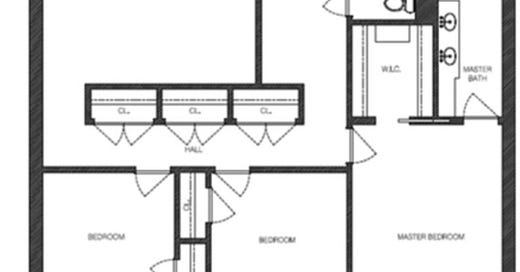


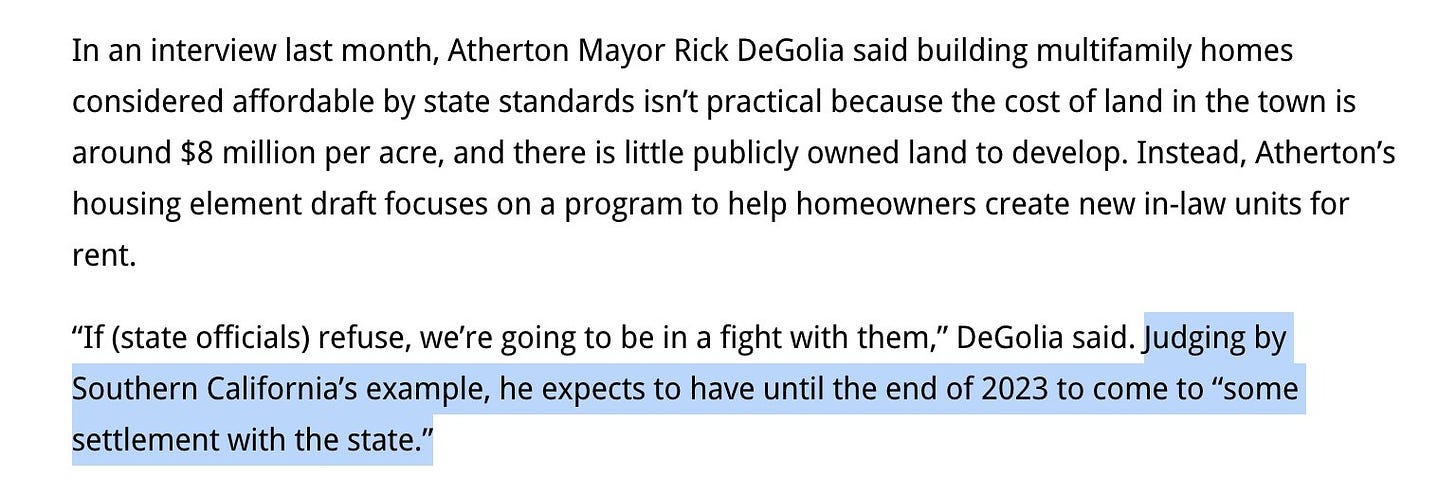


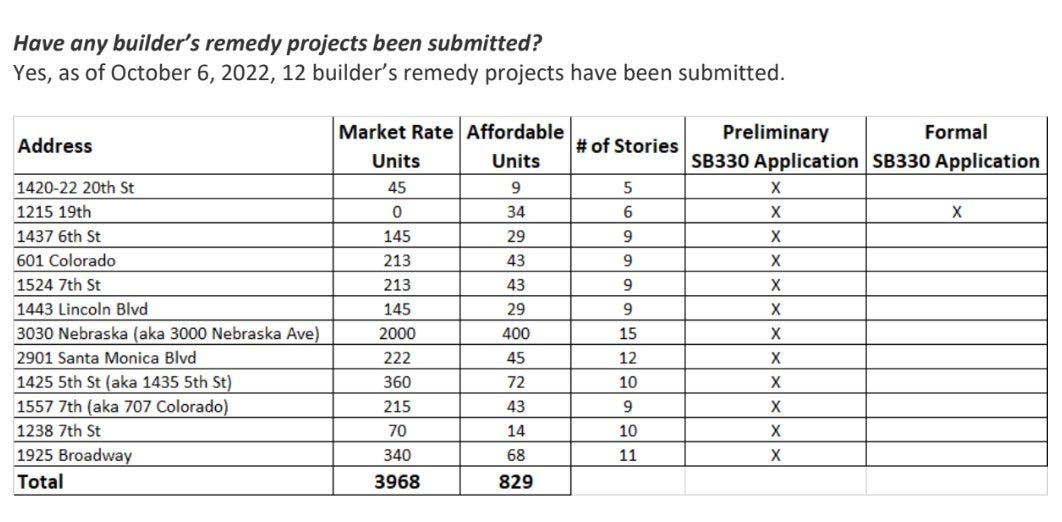

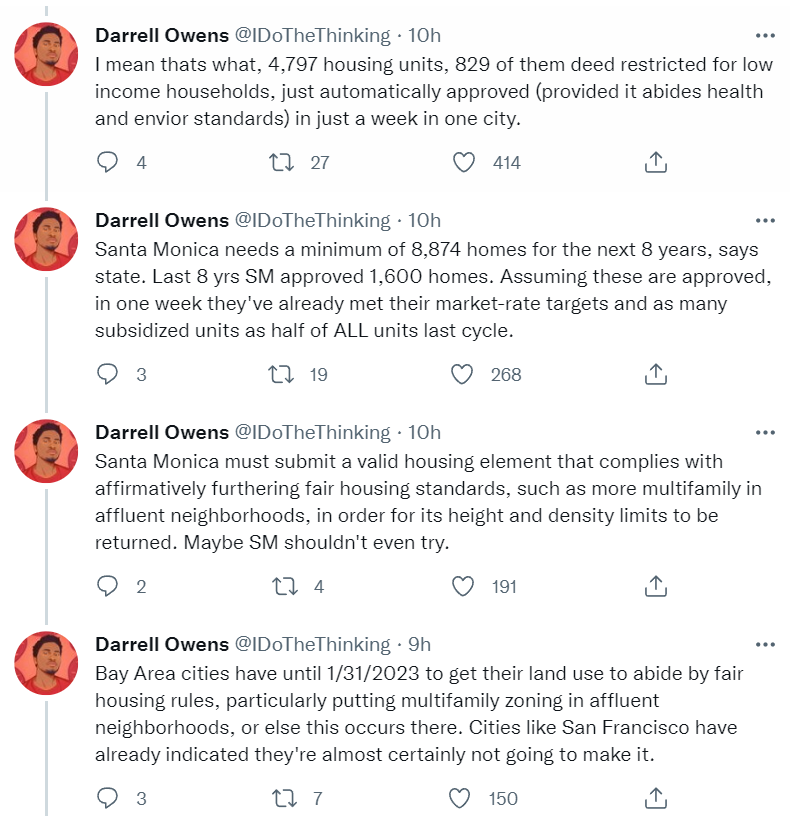


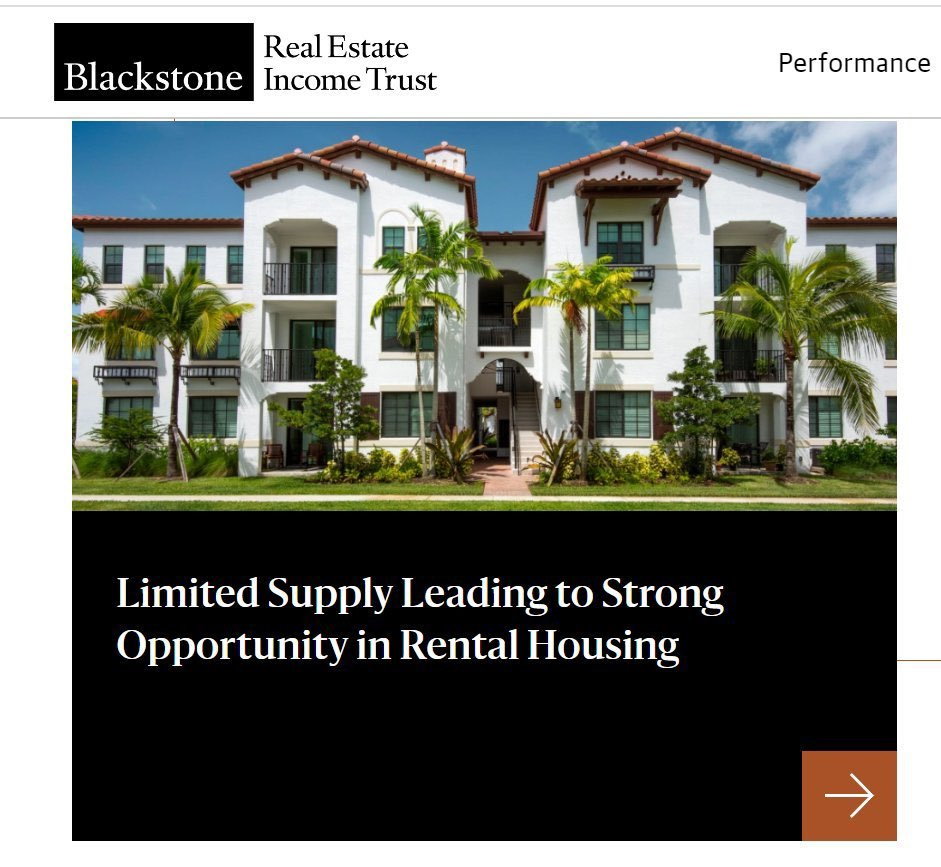
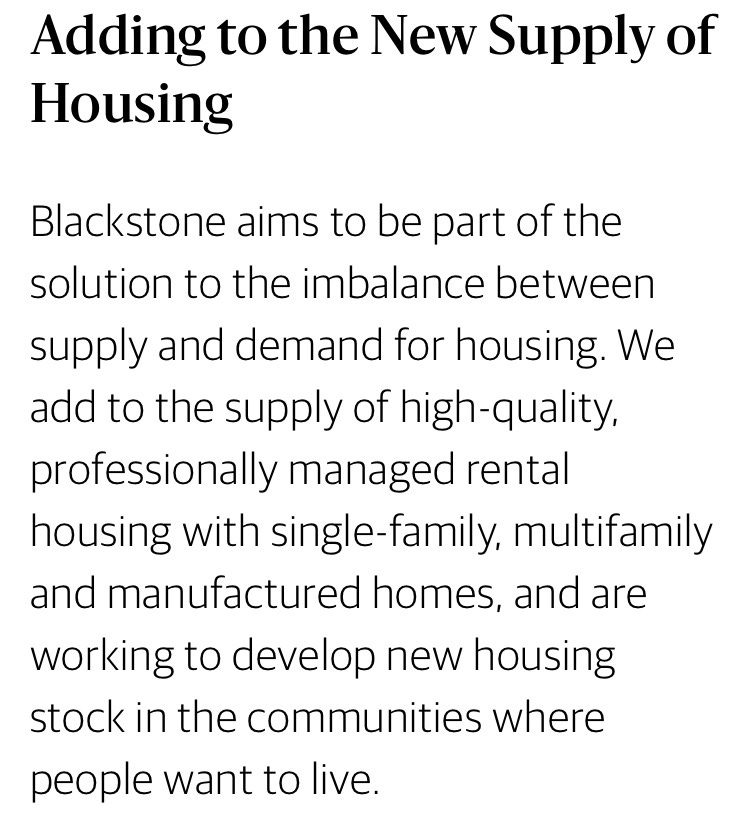

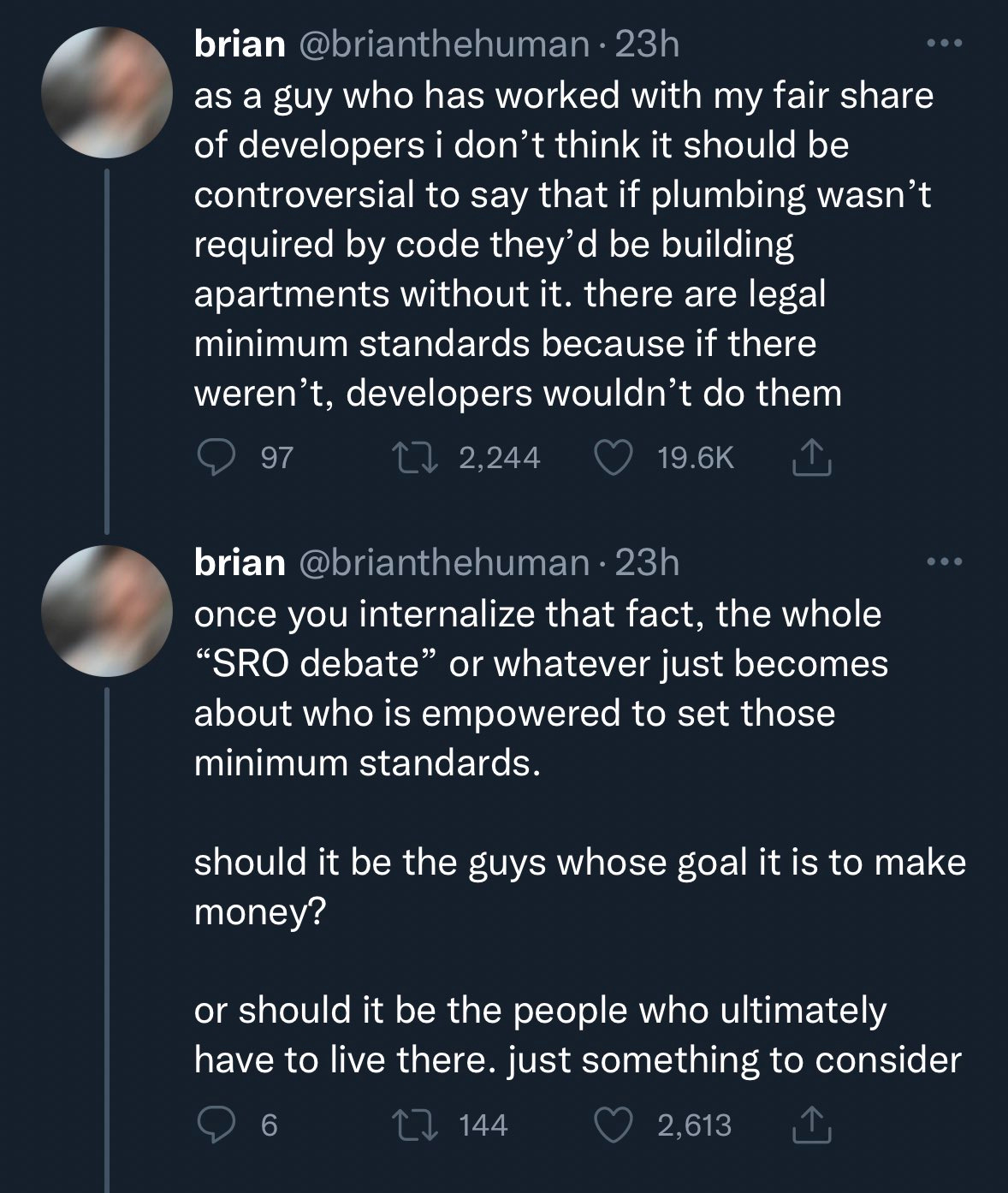
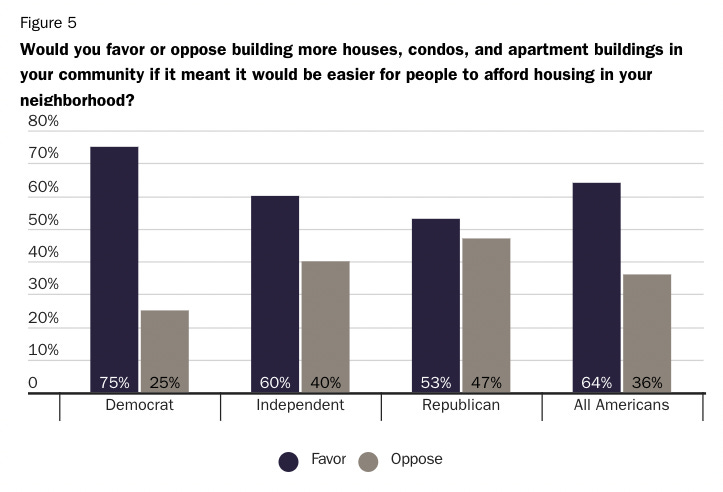




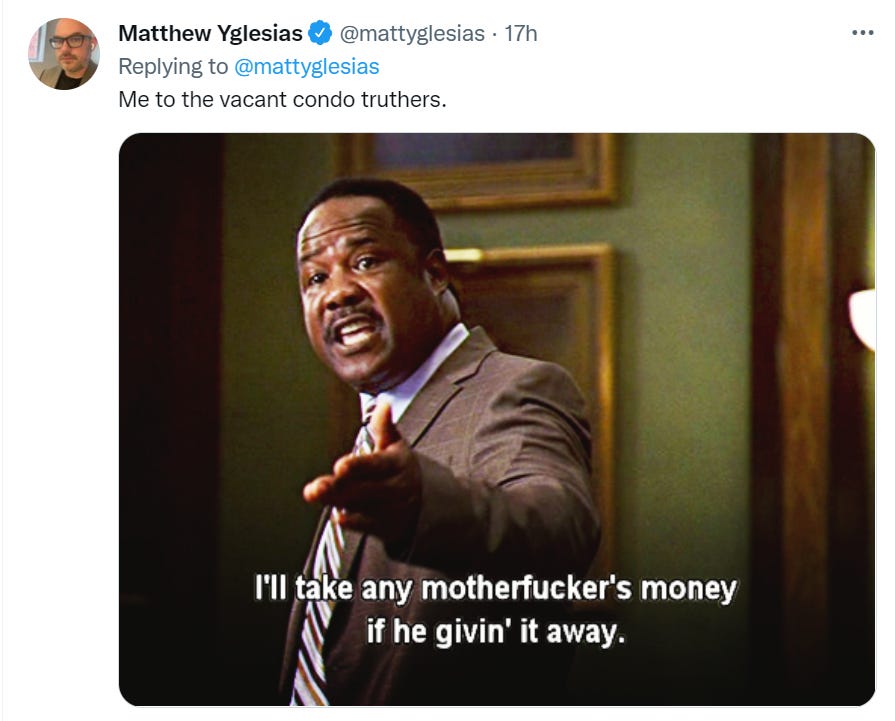

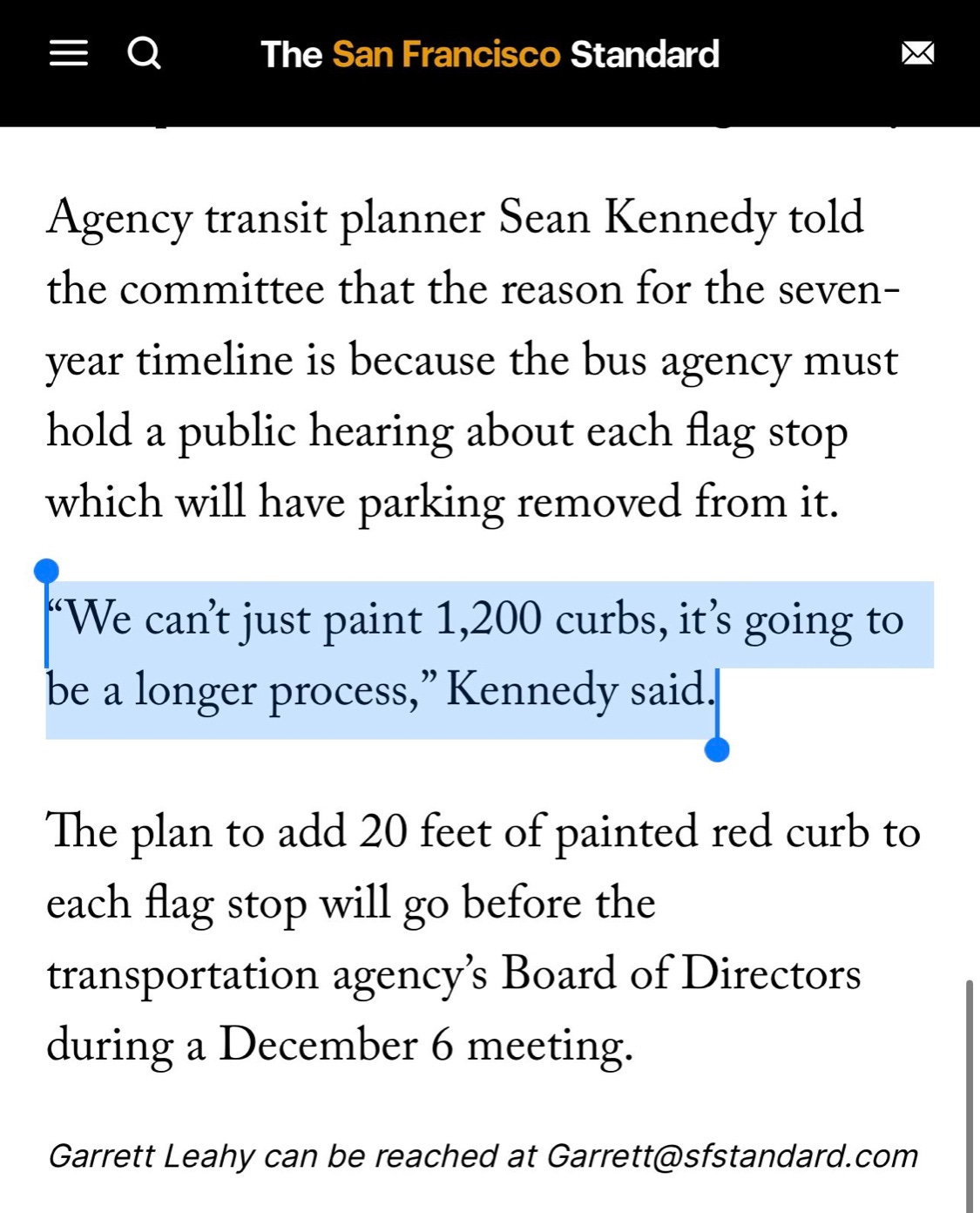
I am very disappointed that a guy with such a great reputation for thoroughness and clear thinking as you have has written this long wonk piece about housing and transit without mentioning crime / public disorder _even once_, though these phenomena are absolutely central to the way housing and transit are organized in English-speaking countries. I'll quote AnomalyUK's recent post [https://blog.anomalyuk.party/2022/07/cars-or-police/] about virtual nations. My comments and elisions are in brackets.
---
[Your post is like the] 2020 twitter thread [https://twitter.com/JonnyAnstead/status/1248187028237213701] by [urban planner] @JonnyAnstead. It is an excellently written thread, and makes perfect sense if you ignore the question of crime. In the absence of that key item, he is left to think that all these car-centric features [which you set out to combat in this post] are either a mistake, or some weird conspiracy of car manufacturers or road builders. In reality there is massive demand for housing in this form, because it permits the buyers to immigrate into the virtual nation of car drivers.
[W]e now live in a society of pervasive violent crime. I have written much about this over the years, because it is controversial, but I think it is possibly the most important single fact about the modern world. [...] There are vastly more people in our societies today whose behaviour is dangerously criminal than there were when our civilisation was at its peak, which I would put very vaguely as 1800-1939. To the extent that this isn’t overwhelmingly obvious through crime statistics, it is because of the phenomenon I describe here — people are protecting themselves from crime by physically separating themselves from the criminals.
And this is why discussing car usage solely in terms of transport is so pointless. Virtual Nations are in general stupid, but “people with cars” actually do effectively make a virtual nation. To be a citizen of Great Britain you don’t need much paperwork, but to be a citizen of the nation of car drivers you have to register yourself with the bureaucracy and keep your information with them up to date. Because you own an expensive piece of equipment that the state knows all about, you have something that they can easily take from you as a punishment. In fact, they can take it even without going through the endless palaver of a court case. In the last few years, you are even required to constantly display your identification which can be recognised and logged by cameras and computers, so the state for much of the time knows exactly where you are.
I used to find this outrageous, and it is still not my preferred way for a government to govern a country effectively. But it is a way to govern a country, and, unlike Great Britain, the country of British car-drivers is actually governed.
But what about the objection to virtual nations? The virtual nation of car-drivers is not a true province, like Wales or Texas, but it is physically separated from the rest of the nation. That is the point of suburbia, of the windy housing estates full of dead ends, with no amenities and no through roads. If you drive a car, you can quite easily have a home that is not accessible to anyone without a car. When you do have to venture among the savages, you do so in a metal box with a lockable door.
Seems most places the restriction on building far exceed the local externalities that building can cause. And the perceived externality is largely that street parking is not metered by location and time of day.